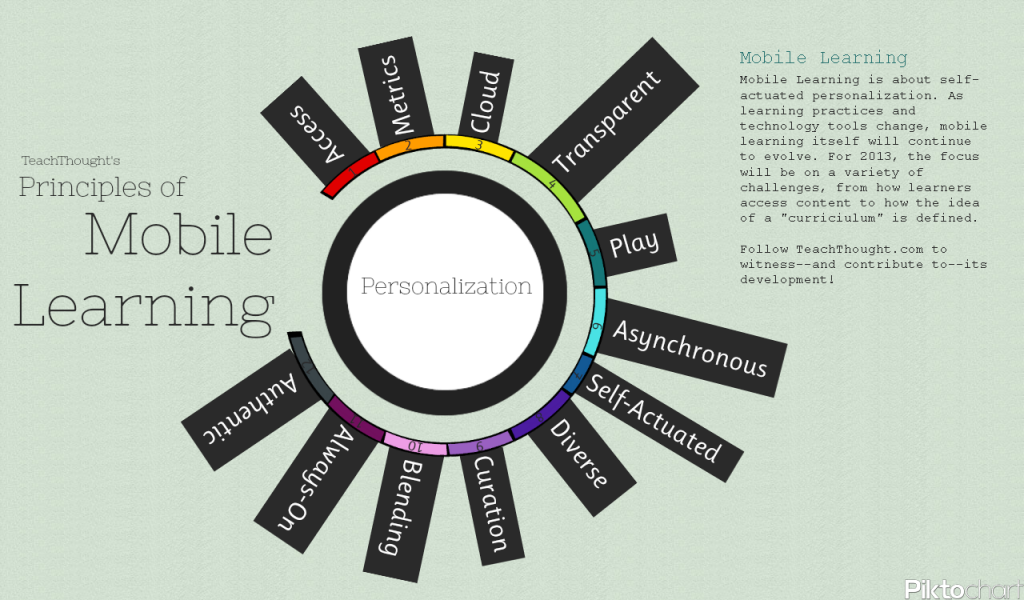mobile learning:Is learning that takes place with the help of mobile devices, or the intersection of mobile computing (the application of small, portable, and wireless computing and communication devices) and e-learning (learning facilitated and supported through the use of information and communications technology).
 |
| e-learning |
Five Types of Mobile Learning:
1-“Super-clickers” allowing for multiple-choice as well as free-response questions during class
2-Tools for student-to-student communication and collaboration during class (e.g. back channel discussion)
3-Portals to the world outside of the class (e.g. Google jockeys)
4-Mobile platforms for delivering content (lecture notes, videos, texts, etc.) anywhere students happen to be
5-Tools for collecting and analyzing data (interviews, photos, scientific data, etc.) while out in the field

Objectives of mobile learning:
1-Encourage ‘anywhere, anytime’ learning Mobile devices allow students to gather, access, and process information outside the classroom. They can encourage learning in a real-world context, and help bridge school, after school, and home environments.
2-Reach undeserved children Because of their relatively low cost and accessibility in low-income communities, handheld devices can help advance digital equity, reaching and inspiring populations ‘at the edges’ children from economically disadvantaged communities and those from developing countries.
3-Improve twenty-first century social interactions Mobile technologies have the power to promote and foster collaboration and communication, which are deemed essential for twenty-first century success.
4-Fit with learning environments Mobile devices can help overcome many of the challenges associated with larger technologies, as they fit more naturally within various learning environments.
5-Enable a personalized learning experience Not all children are alike; instruction should be adaptable to individual and diverse learners. There are significant opportunities for genuinely supporting differentiated, autonomous, and individualized learning through mobile devices.
Challenges of mobile learning:
1-Negative aspects of mobile learning
Cognitive, social, and physical challenges must be surmounted when mobile devices are incorporated into children’s learning. Disadvantages include: the potential for distraction or unethical behavior; physical health concerns; and data privacy issues.
2- Cultural norms and attitudes
Though many experts believe that mobile devices have significant potential to transform children’s learning, parents and teachers apparently are not yet convinced. A 2008 study done by the Joan Gang Center in collaboration with Common Sense Media found that most teachers see cell phones as distractions and feel that they have no place in school.
3-No mobile theory of learning
Currently, no widely accepted learning theory for mobile technologies has been established, hampering the effective assessment, pedagogy, and design of new applications for learning.
4-Differentiated access and technology
Wide diversity among mobile technologies represents a challenge for teachers and learners who wish to accelerate academic outcomes as well as the producers who seek to facilitate such learning.
5-Limiting physical attributes
Poorly designed mobile technologies adversely affect usability and can distract children from learning goals. Physical aspects of mobile technologies that may prevent an optimal learning experience include: restricted text entry, small screen size, and limited battery life.

References:
The definition:
http://www.mobl21.com/Basics_Of_Mobile_Learning.pdf
Types of mobile learning
http://derekbruff.org/?p=355
Objectives & Challenges:
http://www.mobl21.com/Basics_Of_Mobile_Learning.pdf

No comments:
Post a Comment